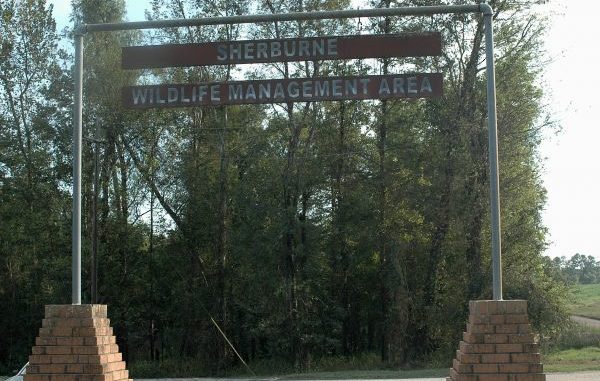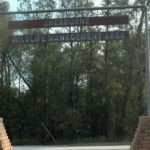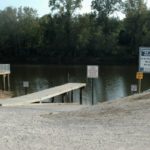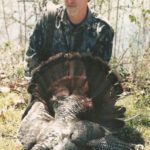
The Sherburne WMA complex was swamped in 2011, and turkey hunting took a hit last season. Follow these tips to claim your gobbler this season.
Brandon Trahan remembers walking down a long, winding trail in Sherburne Wildlife Management Area and hearing a gobbler sound off at daybreak.
Accompanying him was a youth hunter, Matthew Matherne, and the youth’s father. The younger Matherne had been chosen through a lottery to chase gobblers on the WMA.
“Matthew’s father had located the gobbler on a previous scouting trip,” Trahan said.
The hunters initially heard the gobbler some 300 yards from where they were walking.
“We hurried down the trail to get closer to the bird,” he said. “Once we got closer, we got off the walking trail and went 20 yards in the woods and sat down.”
According to Trahan, Matherne’s father initially began calling with some soft clucks.
“I remember the bird flying down, and it was certainly on the ground with some hens,” Trahan said.
The gobbler continued to sound off; however, it would move back and forth in opposing directions at a distance from their setup.
“We were (sitting) awhile there, as the gobbler kept up this movement,” said Trahan. “The father and I were both calling at that point, but the gobbler kept walking back and forth with the hens.”
When the hunters began imitating the calls of two hens on their slates and diaphragms, one of the hens with the gobbler started to respond with her own yelps and clucks.
“At that point, it was only every 30 minutes that we heard a gobble,” said Trahan. “We waited like this for a couple of hours.”
At one point, Trahan saw the hens walking into the area at some distance. The hunters had stopped their calling right before the hens were visually observed.
As the hens moved even closer, they finally saw the gobbler strutting behind the hens.
“The gobbler came right in, and we didn’t move,” Trahan. “Matthew was seated right ahead of us at a different angle, but he was able to turn and aim at the strutting gobbler.”
The lad’s shotgun spoke, and the result was a fallen gobbler.
When it was all over, Matthew was admiring his Atchafalaya swamp gobbler, a bird that weighed 17 ½ pounds and sported a 10 1/8-inch beard and 1 2/8-inch spurs.
The young Matherne was indeed fortunate as this was the only bird taken during the area’s youth lottery hunt on March 17.
Historically, youth and their parents gather with volunteer guides of local chapters of the National Wild Turkey Federation for this hunt. Trahan is with the Dindon Farouche NWTF chapter headquartered in Opelousas.
For the novice to the Sherburne Complex, these swamplands consist of Sherburne WMA and the Atchafalaya National Wildlife Refuge. Together, these chunks of the Atchafalaya Basin offer more than 44,000 acres for youth and adult lottery hunters.
Despite the history of success on this wide swath of property, Sherburne hunters had a very difficult time taking longbeards in 2012 — a year after the Atchafalaya Basin was swamped when the Morganza Spillway was thrown open to reduce pressure on Mississippi River levees.
“During our youth hunt last year, there was only one gobbler taken on those two days,” according to biologist Tony Vidrine with the Louisiana Department of Wildlife & Fisheries. “And during all the lottery hunts for 2012, there were only 13 killed.
“Due to the flood, we had to cut the hunter numbers down to 50 for the general lottery hunt.
Managers took the step of limiting the hunting pressure for the simple reason that there wee fewer birds after the floodwaters receded.
“There was complete nest failure here, and we lost a significant number of birds,” Vidrine explained. “Water levels were at 10 feet throughout the Sherburne Complex for five to six weeks.”
According to the biologist, there were clusters of birds observed on the levee system, but predators were also in the vicinity.
“We lost production, and as a result there were no jakes taken at all in 2012,” he said. “There were only 186 hunting efforts for the 2012 season.”
By contrast, there were 77 turkeys taken the spring of 2011 — 67 adults and 10 jakes, noted Vidrine. That equated to one turkey taken per 10 hunting efforts during that season.
Historically, the Sherburne Complex has delivered grand numbers of longbeards to hunters taking advantage of the WMA.
In 2007, for example, hunters slammed 97 birds.
Alas, the carryover of the 2011 flooding has impacted this year’s lottery hunting.
“For the 2013 turkey season on the Sherburne Complex, we had to cut the season even more with just one youth lottery hunt for 10 youth hunters scheduled for March 16,” Vidrine said. “The general lottery hunt will occur for only two days, March 23-24, and for only 50 hunters.
“Turkey hunting will be open to the general public for three more days — March 25-27.”
As for predictions for the spring 2013 turkey hunts, Vidrine was guarded.
“My predictions are that they will kill a few more (birds compared to last season), but the overall harvests will still be way down,” he said. “It will take a few years to get the numbers where they were before.
“It will be interesting to see the number of jakes that come out this year to see if production has improved.
Vidrine said he expects turkey hunters to see birds in the traditional places — though not nearly in the numbers of past years.
“Overall, I am thinking that it will take five years for the Sherburne Complex to get back the turkey population it had before the flood,” he estimated.


